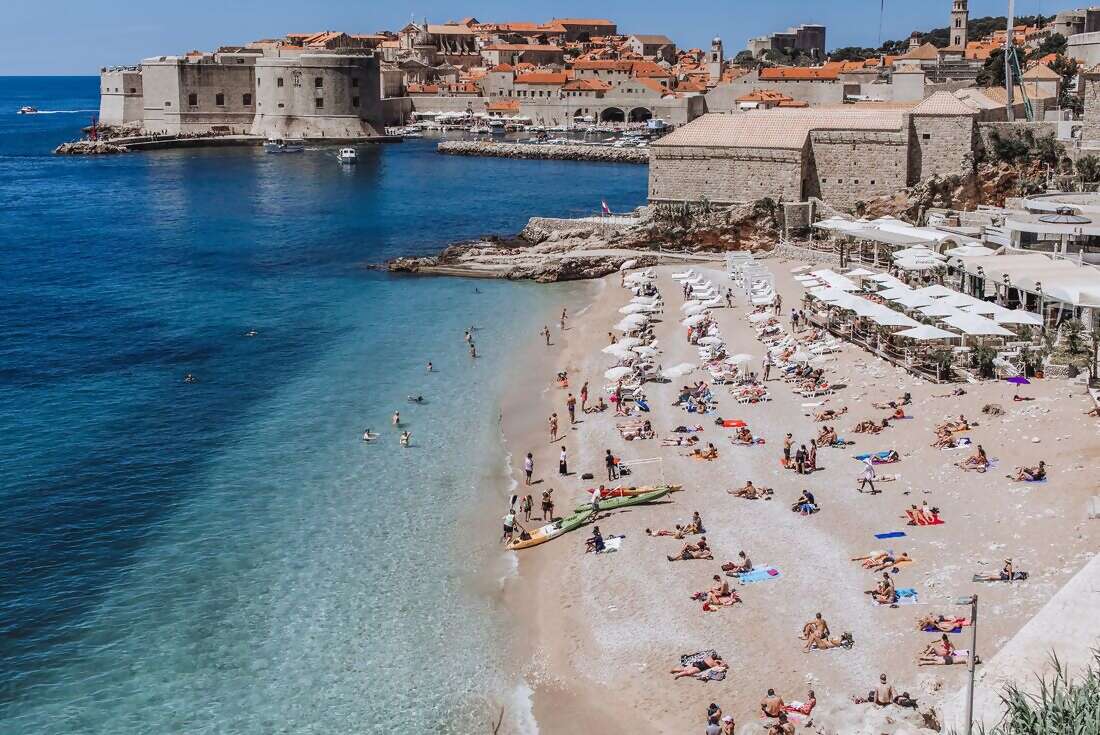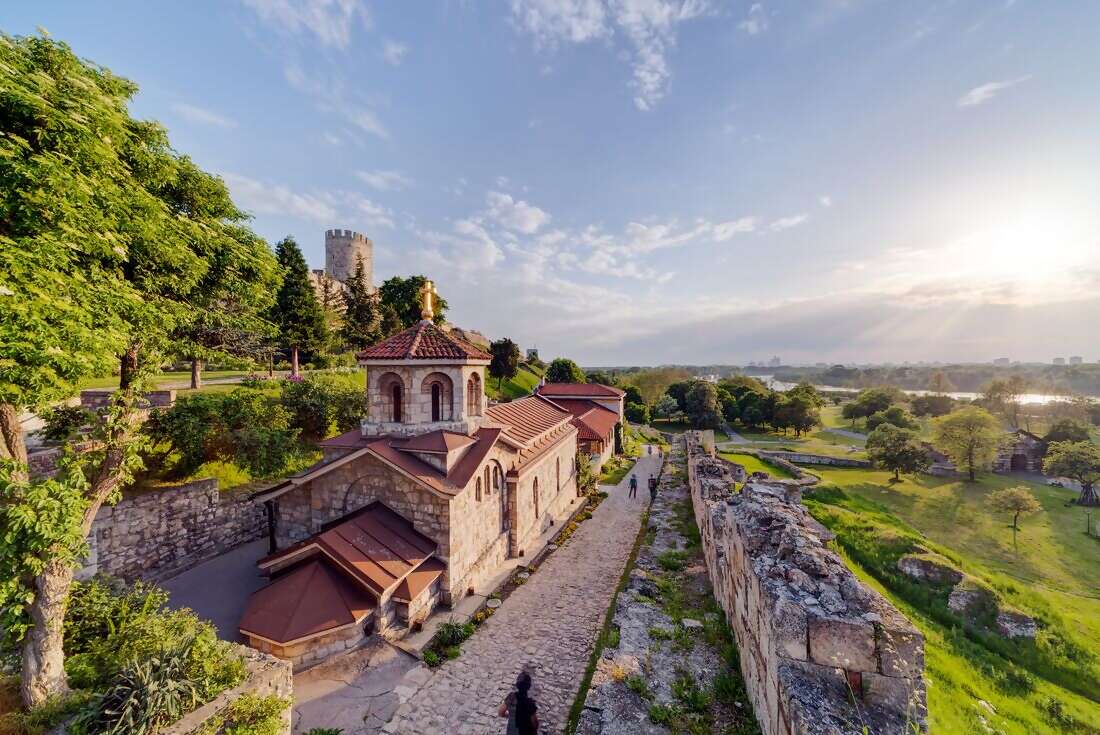 Welcome to the Balkans - where East meets West and new merges almost seamlessly with old. Over the centuries people have travelled to this region of Eastern Europe for its fertile soil, natural resources and healing waters. This enchanting land, which has remained virtually untouched by tourism, boasts rich tradition, vibrant culture and mouth-watering cuisine. With historical attractions in Budapest, nightlife in Belgrade, Sarajevo's beautiful old town, Montenegro's Durmitor National Park and lively Dubrovnik, this adventure tour is delightfully different.
Welcome to the Balkans - where East meets West and new merges almost seamlessly with old. Over the centuries people have travelled to this region of Eastern Europe for its fertile soil, natural resources and healing waters. This enchanting land, which has remained virtually untouched by tourism, boasts rich tradition, vibrant culture and mouth-watering cuisine. With historical attractions in Budapest, nightlife in Belgrade, Sarajevo's beautiful old town, Montenegro's Durmitor National Park and lively Dubrovnik, this adventure tour is delightfully different.Highlights
Cross the Chain Bridge in Budapest and take the funicular up to Buda Castle for beautiful views over Pest
Sip the famous Croatian Traminac Premium wine at a wine tasting at a 15th century family-run vineyard in quaint Ilok
Wander through Belgrade’s Bohemian quarter and grand 19th-century boulevards, before launching yourself into its animated nightlife
Witness Mostar's famous bridge divers hurl themselves from the stones of a bridge that has spanned the river here for centuries
Sarajevo is one of the most scenically located cities in Europe. See the sights on a guided walking tour and learn about its recent history as a city under siege










- You will visit the following places:
-

Budapest
Budapest is the capital of Hungary. As the largest city of Hungary, it serves as the country's principal political, cultural, commercial, industrial, and transportation centre. In 2010, Budapest had 1,721,556 inhabitants, down from its 1980 peak of 2.06 million. The Budapest Commuter Area is home to 3,271,110 people. The city covers an area of 525 square kilometres (202.7 sq mi) within the city limits. Budapest became a single city occupying both banks of the river Danube with a unification on 17 November 1873 of right (west)-bank Buda and Óbuda with left (east)-bank Pest. Budapest is one of Europe's most delightful and enjoyable cities. Due to its scenic setting and its architecture it is nicknamed "Paris of the East".
-

Belgrade
Belgrade is the capital and largest city of Serbia. The city lies at the confluence of the Sava and Danube rivers, where the Pannonian Plain meets the Balkans. It has an urban population of 1.2 million, while the metropolitan area has more than 1.7 million people, making it one of the largest cities of Southeastern Europe. Its name translates to white city. Belgrade's wider city area was the birthplace of the largest prehistoric culture of Europe, the Vinča culture, as early as the 6th millennium BC. In antiquity, the area of Belgrade was inhabited by a Thraco-Dacian tribe Singi, while after 279 BC a Celtic tribe inhabited the city, naming it "Singidun".
-

Sarajevo
Sarajevo is the capital and largest city of Bosnia and Herzegovina, with a population of 275,524.The Sarajevo metropolitan area, including The Canton of Sarajevo and East Sarajevo is home to 688,437 inhabitants. Moreover, it is also the capital of the Federation of Bosnia and Herzegovina entity, and the center of the Sarajevo Canton. Nestled within the greater Sarajevo valley of Bosnia, it is surrounded by the Dinaric Alps and situated along the Miljacka River in the heart of Southeastern Europe and the Balkans. Sarajevo is the leading political, social and cultural center of Bosnia and Herzegovina, a prominent center of culture in the Balkans, with its region-wide influence in entertainment, media, fashion, and the arts.
-

Kotor
Kotor is a coastal town in Montenegro with a population of about 13,500. It is well-known for its World heritage medieval structures (including churches and fortifications) and its stunning natural setting at the very edge of the mountain-rimmed Kotor Bay. It is situated in a most secluded tip of Boka Kotorska bay, in the northern part of the Montenegro coast on the Adriatic Sea. Kotor has developed around Stari Grad (local language for "old town"), the city's old town and best known landmark, which is listed with UNESCO World heritage sites. Kotor Bay is the deepest natural fjord-like bay in the Mediterranean Sea, and the scenery around it (including the steep mountains which come almost straight down to the waters edge) is spectacular.
-

Dubrovnik
Dubrovnik is a gorgeous Croatian city on the Adriatic Sea coast positioned at the terminal end of the Isthmus of Dubrovnik. It is one of the most prominent tourist resorts of the Mediterranean and listed as a UNESCO World Heritage Site since 1979. The city is nicknamed "Pearl of the Adriatic". The success of Dubrovnik’s tourist industry has brought a certain degree of complacency and self-satisfaction. Certain aspects of the city’s appeal remain immune to tourist numbers, however, most notably the uniquely stunning setting and the unjaded straightforwardness of the Dubrovčani themselves.